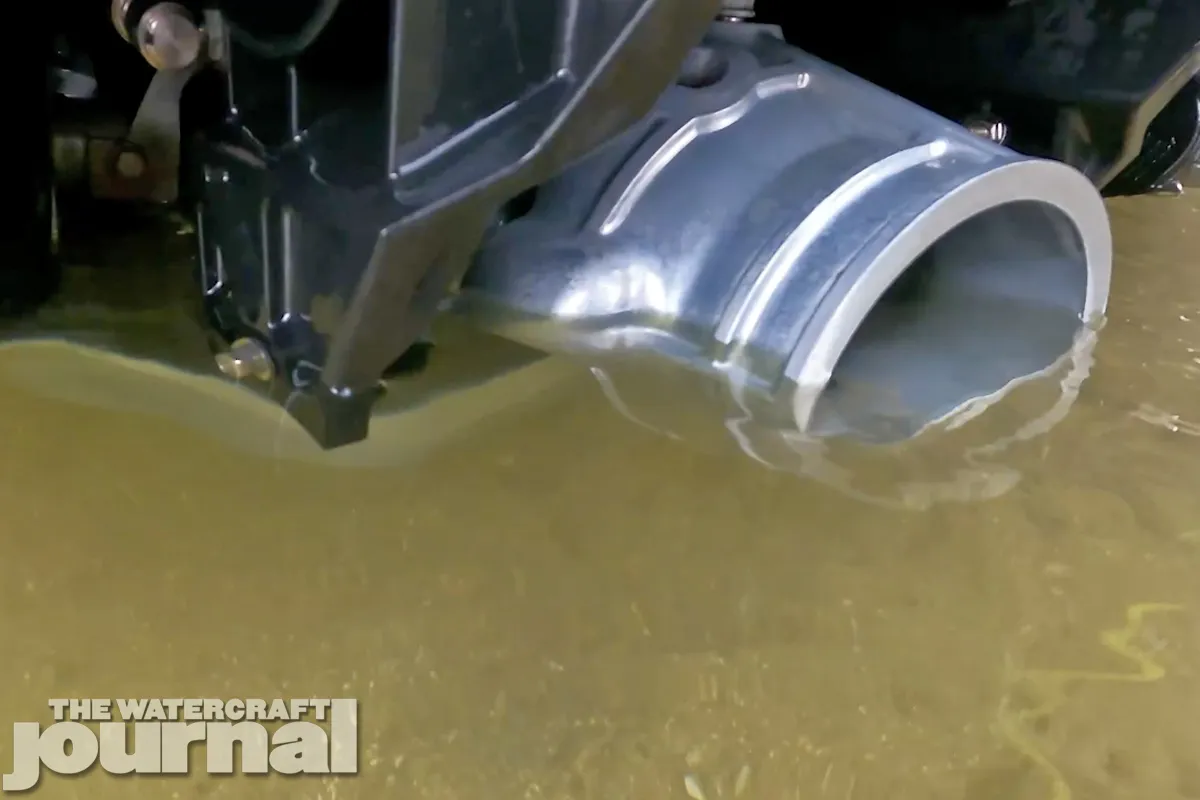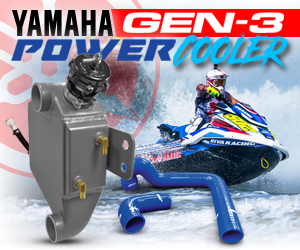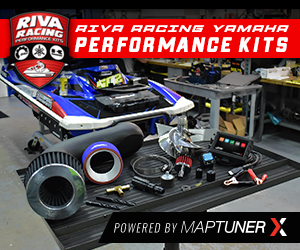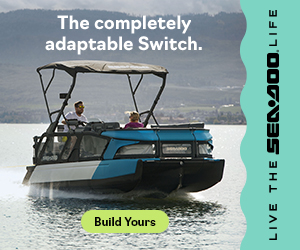“Today’s watercraft are just too big,” one commenter wrote. “They’re not fun anymore. You can’t whip ’em around like you used to.” Boy, have we got news for you. The Rec-Lite segment of runabouts have been one of the best additions to the marketplace in nearly a decade, and Yamaha’s EX Series has provided a new entry-point for enthusiasts looking to get into PWC without breaking the budget. Yet, of these smaller entries few have truly embodied the spirit of what many deem as watercraft’s “heydays.”
In 2019, Yamaha took its EX to a new level by shaving off an impressive 60-pounds through the use of its featherweight NanoXcel2 material in the hull and deck, and tuning the TR-1 EX 1,049cc 4-stroke into a throttle-happy 110-horsepower TR-1 High Output – giving us the EXR. Admittedly, it was a personal favorite of The Watercraft Journal as it was sublimely thrilling. Aimed as a entry racer, the EXR leaned heavy on the closed course credibility of its GP Series siblings but failed to set the world on fire as we had hoped.
For 2022, gone is the EXR, the lightweight 110HP Rec-Lite rocket, and in its stead, Yamaha has metamorphosed our favorite little EX into the JetBlaster (MSRP $9,999). The new 2022 ‘Blaster takes all of racy fun of the EXR and pours in a healthy dose of rowdy playfulness that so many enthusiasts have been clamoring for. Drawing from the revered history of the WaveBlaster, the new JetbBlaster is perfectly capable of submarines, power slides and 360s.
Curious how well the new ‘Blaster stacked up against its famous predecessor, the original WaveBlaster, we referenced our previous article, Weight Watchers: The Power of Power-to-Weight Ratios to evaluate the two craft’s respective power-to-weight ratios. Weighing in at 360-pounds and producing a total of 63-horsepower, the 1993 ‘Blaster earned a power-to-weight ratio of .20:1 (horsepower per pound). Interestingly, at 549-pounds and making 110-horsepower, the 2022 Yamaha JetBlaster WaveRunner came in at a near identical .20:1 ratio! While certainly the new ‘Blaster is larger (10’3″ long and 44.5″ wide), it’s power-to-weight ratio is equal to the 1993 entry.
Newly equipped with angled, padded foot chocks, an open-neck cast aluminum steering system with wider 30-inch MX-style handlebars; and custom-configured electric trim, the new ‘Blaster is ideal for wake jumping and powerslides. Speaking of which, the repitched trim alters even the neutral position, raising the bow ever-so-slightly. At full tilt, the ‘Blaster stands tall and with a blip of the throttle ejects itself out of the water. No, it’s not a wheelie, it’s a liftoff.
All of that low-end grunt is courtesy of the same TR-1 HO 3-cylinder rocketing the ‘Blaster up to speed. Power is immediate and the ‘Blaster responds in kind, leaping excitedly out of the water and sprinting up to a maximum GPS-recorded speed of 54.6mph at 7,960rpm. The TR-1 is accessed by removing the single-piece bench seat and through two windows cast into the black plastic “sub-deck” to reach for the dipstick, oil filter, battery or other maintenance items. For full engine access, the entire sub-deck can be removed with 15 screws within a minute’s time exposing the entirety of the engine compartment.
The ‘Blaster benefits from a 13.2-gallon capacity fuel cell, 7.7-gallons of total storage, two-tone CNC-cut traction mats, a padded spring-loaded folding swim step, and of course, Yamaha’s RiDE dual-throttle brake and reverse system. The revised LCD screen below the handlebars now reads off trim settings as well as a little-too-basic 4-bar fuel gauge. The front wet storage is optimal for a wet rope or flipflops. Thankfully, the center console is cavernous, albeit a tad narrow; a can of spray sunscreen, water bottle or a hat slip in without any trouble.
No, you won’t find cruise control or No Wake features on the JetBlaster either. And for most of you reading this, that is all you’d want anyway. Weighing in at 549-pounds, the JetBlaster with a little over 50-pounds lighter than the heaviest EX, the fully-loaded Limited. Pedestrian tricks like bunny hops, donuts, 360’s, wheelies, and even the harder-to-execute on-the-bondrail power slides from our youth are easily achieved. Wave jumping is an endorphin-rewarding experience. Frankly, it’s easily the most excitable, exhaustive fun we’ve had on a runabout in a long, long time.
While cruising at plane, the ‘Blaster – like its EX siblings – is a relatively dry ride; its narrow bench seat and sloping footwells provide an upright but comfortable static riding position. But riding this way would be to wholly miss the craft’s purpose – like riding a standup ski solely upon your knees. Standing with your feet back in the angled chocks and shoulders up over the handlebars is how the JetBlaster wants to be ridden; responding to every shift in weight, every flick of the throttle and snap of the steering with intuitive, excitable energy.
Bathed in a retina-searing Cyan with Lime Yellow, the ‘Blaster is wrapped in bright splatter paint-type graphics, and a high quality cut-and-sew, thickly-stitched one-piece bench seat cover. Yamaha forwent the pistol-grip style handgrips and went with a more rounded MX-style grip and riders will be switching up their positioning often. Lastly, a stainless tow eye juts out from below the rear of the bench permitting the towing of a raft or knee boarder, although the JetBlaster’s lightweight might result in a case of the “tail wagging the dog.”
A final change to the EX lineup resulted in removing the ‘Blaster from the Rec-Lite category and creating a new “Freestyle” category joining the 4-stroke SuperJet. The SuperJet sees a small price increase of $300, from $9,499 to $9,799 with no changes apart from some optional storage accessories and an adaptive bracket to fit two small EcoXgear speakers were made for 2022.
These two machines offer the most hyper responsive, athletically-challenging ride – although not too much. Snapping the tail loose, roosting friends, and spinning 360’s are child’s play – the ‘Blaster makes it that easy.












































Most people have upgraded their Blaster for more power.. Is this platform able to be upgraded in the power area.
The TR-1? Heck yeah, it is.